Triangles Class 9th Notes - Free NCERT Class 9th Maths Chapter 7 Notes - Download PDF
A triangle is a closed geometrical shape with three sides, three vertices, and three angles. It is a polygon with the fewest sides. Triangles can be divided into two categories based on the sides and based on angles, like equilateral triangles, scalene triangles, isosceles triangles, etc. Triangles are used in many areas, such as building, art and design, locating objects, truss bridges, etc. In daily life, many things are triangular, like sandwiches, pizza, pyramids, etc.
This Story also Contains
- Class 9 Chapter 7 Triangles Notes PDF – Download Free Study Material
- NCERT Class 9 Maths Chapter 7 Triangles Notes
- How to Use the Triangles Class 9 Notes Effectively?
- NCERT Class 9 Maths Notes – Chapter-Wise Links
- NCERT Books and Syllabus
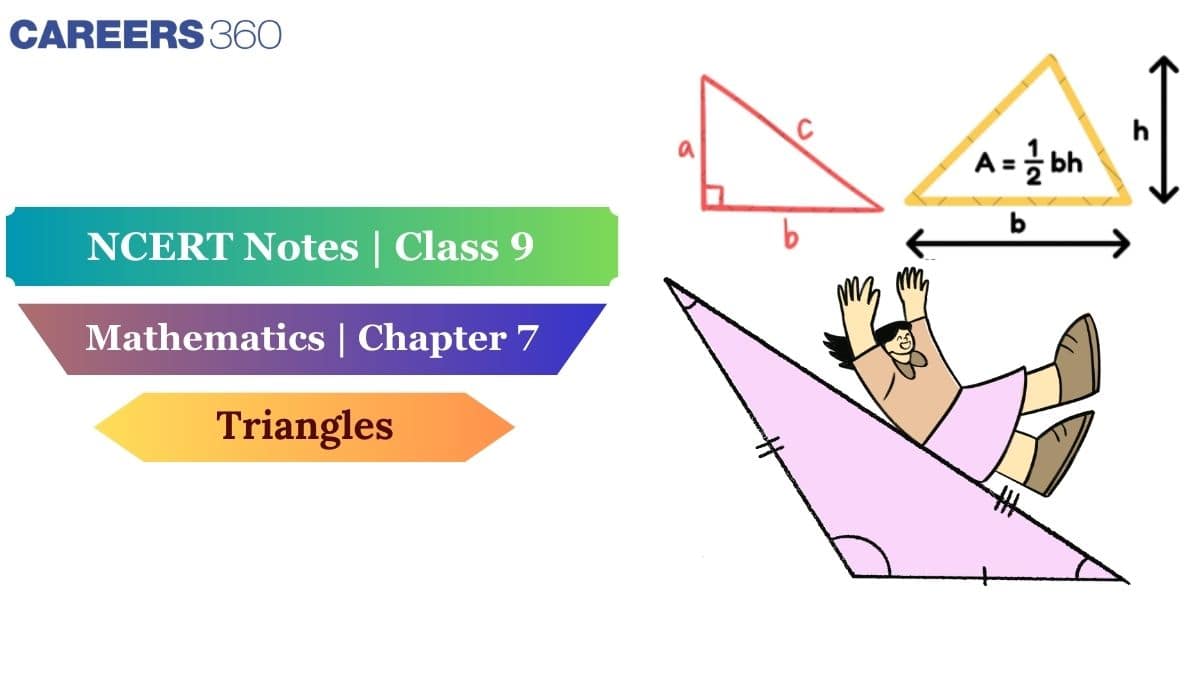
These notes cover the basic definition of the triangle, triangle congruence, SAS, ASA, SSS and RHS Congruence Rule, and triangle Properties, triangle Inequalities. Students must practice all the questions and examples to ace the topic. NCERT class 9th maths notes contain all the chapters as per the latest syllabus. Students can download NCERT notes according to their standard and subjects. Find everything in one place – NCERT Books, Solutions, Syllabus, and Exemplar Problems with Solutions – in this NCERT article.
Also, read,
Class 9 Chapter 7 Triangles Notes PDF – Download Free Study Material
Careers360 brings you NCERT Class 9 Maths Chapter 7 Triangles notes, carefully prepared by subject experts to simplify your studies and help in exams. A downloadable PDF is available — click the link below to access it.
NCERT Class 9 Maths Chapter 7 Triangles Notes
These NCERT notes for Class 9 Maths Chapter 7 Triangles have been prepared by Careers360 experts to make learning simpler and to help you score better in exams.
Triangle
The word triangle comes from the Latin word triangulus, and the meaning of triangulus is three-cornered or having three angles. Therefore, the triangle is a closed figure that has three sides.
Congruent Triangles
If in a pair of triangles all three sides as well as three angles are equal, then this is called the congruence of triangles, and it is said Corresponding parts of the congruent triangles (CPCT), and it is denoted by the symbol $≅$. To prove the congruence of triangles, there are some criteria, and these criteria are discussed below.
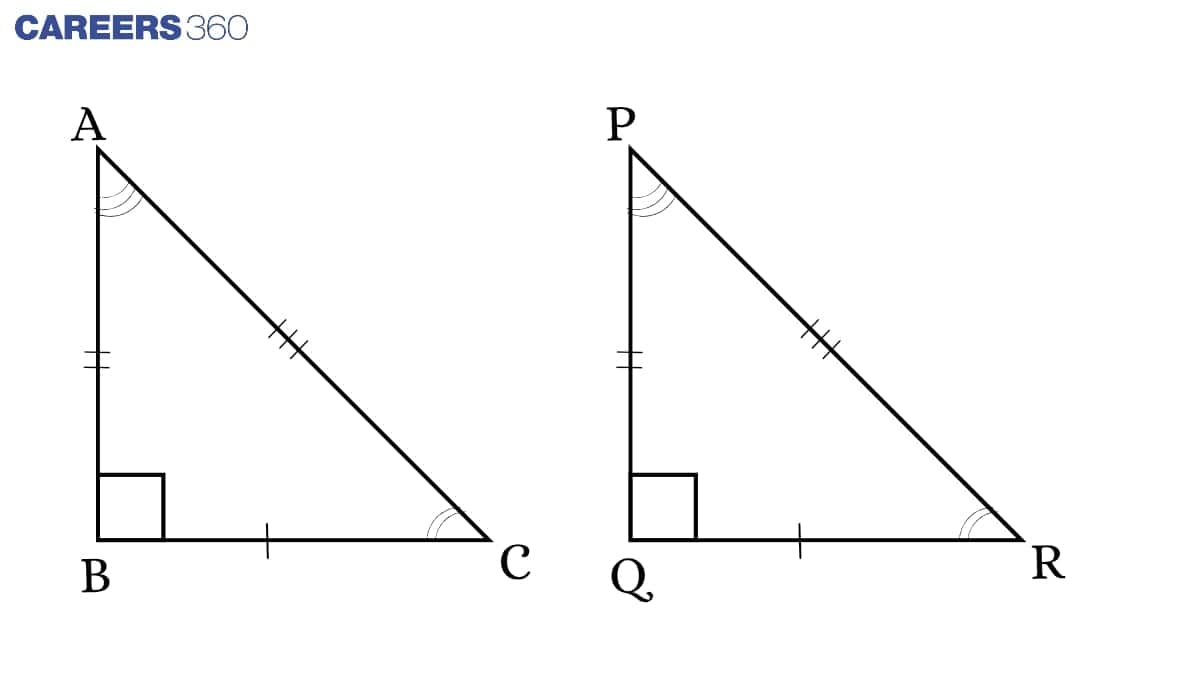
Criteria for Congruence of Triangles
Triangle congruence is one of the important concepts not only in mathematics but also in real life. For example, congruency is used to create identical objects. For defining the congruency of triangles, there are some criteria, and these are as follows.
1. SAS
2. ASA
3. AAS
4. SSS
5. RHS
SAS Criteria for Congruency
If the two sides of the pair of triangles and the angle that is included by these two sides are equal to the corresponding sides and angle that includes these two sides, then this is called Side-Angle-Side congruence (SAS), as shown in the figure.
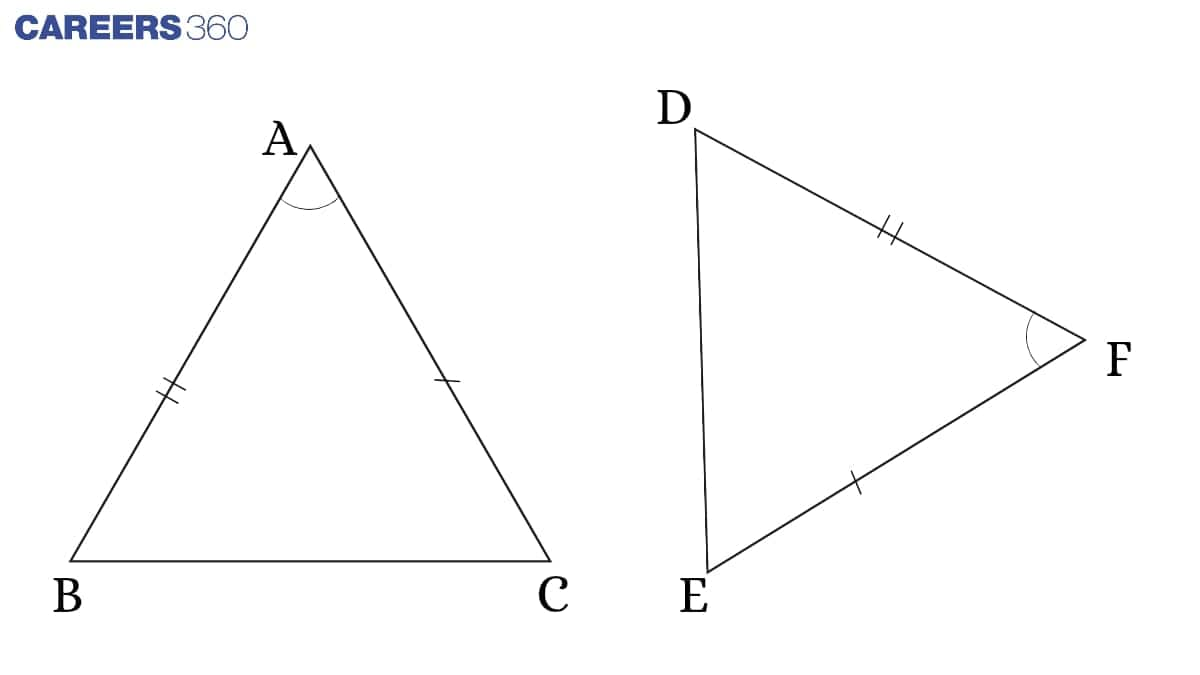
ASA Criteria for Congruency
If two angles of two triangles and the side that includes these two angles are equal to the corresponding two angles and the side that includes these angles is equal, it is called the Angle-Side-Angle congruence (ASA), as shown in the figure.
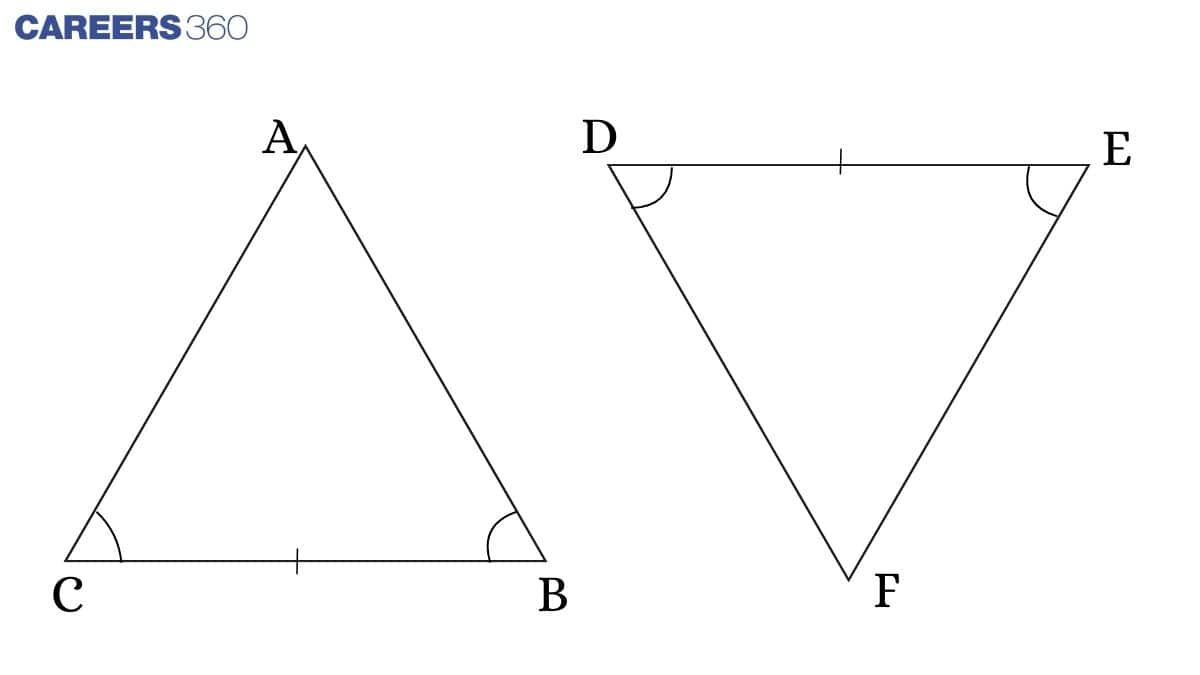
AAS Criteria for Congruency
If in two triangles, two angles and one side are equal to the two angles and one side of another triangle, then this is called the Angle-Angle-Side Congruence (AAS), as shown in the figure.
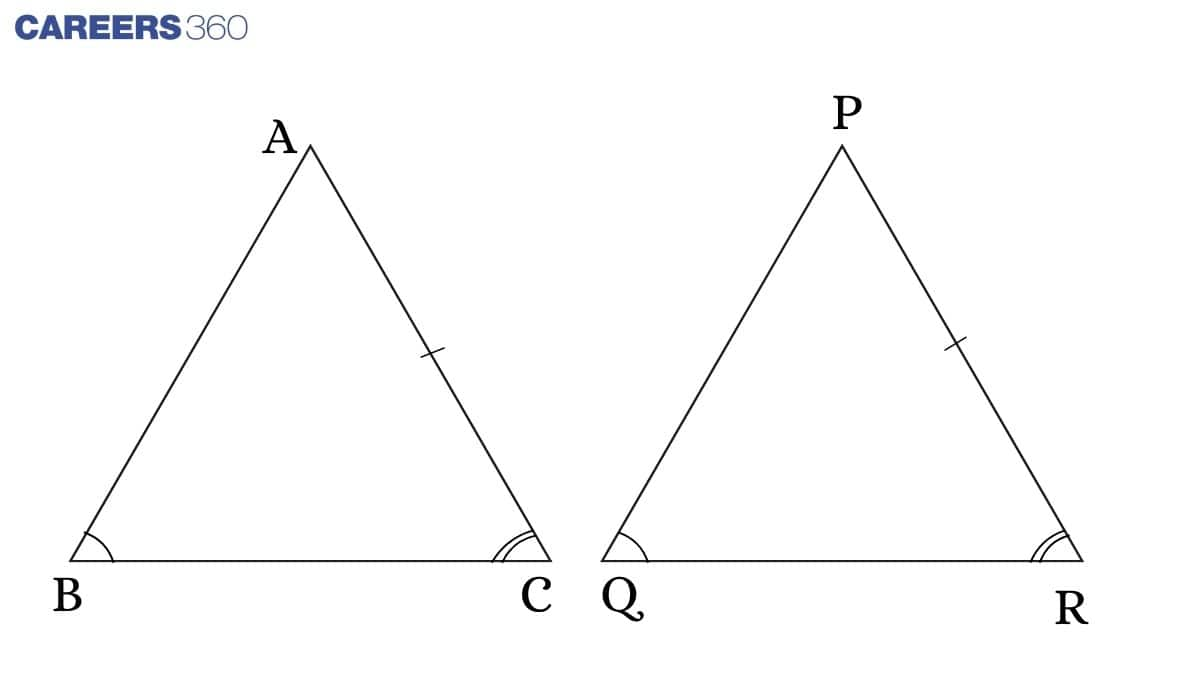
SSS Criteria for Congruency
If the three sides of the two triangles are equal, then the two triangles are congruent, which is called the Side-Side-Side congruency(SSS), as shown in the figure.

RHS Criteria for Congruency
If in two right-angle triangles the right angle, hypotenuse and the other side are equal, then this is called the Right-Hypotenuse-Side congruency (RHS), as shown in the figure.
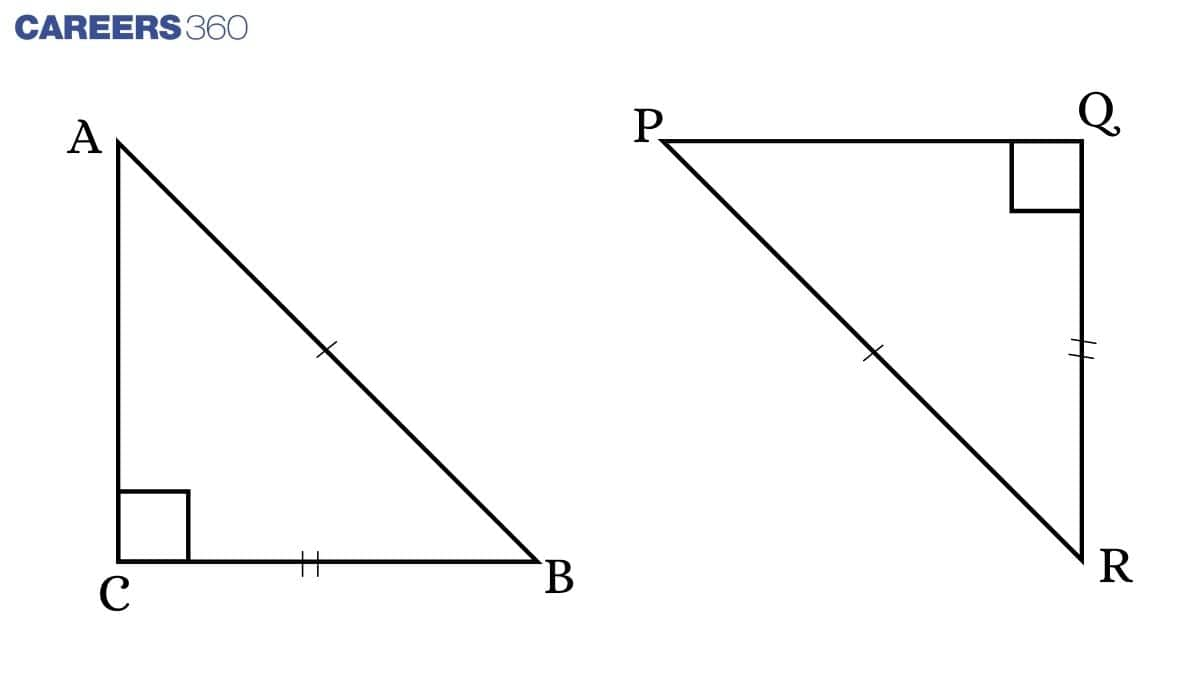
Important Note about SSA and AAA Congruency Rules
1. SSA is not a valid rule as it does not include the angle between the pair of sides
2. AAA is not a valid rule, as all three angles of both triangles may be equal, but the lengths of the sides are different.
As shown in the figure,

Properties of a Triangle
1. Angles opposite to the equal sides of the triangle are equal in an isosceles triangle.
2. If any two sides are unequal in a triangle, then the angle opposite to the longer side of the triangle will be greater than the angle opposite to the shorter side.
3. The sum of any two sides of the triangle is greater than the size of the third side.
How to Use the Triangles Class 9 Notes Effectively?
Triangles become easier when we understand the basic rules, like congruence and the properties of different triangles. The 7th chapter in class 9 teaches us how to compare triangles and check if they are equal in shape and size. Class 9 Maths chapter 7 notes help us revise these concepts easily and tackle geometry questions with ease. Here are some more points on how these notes are important.
- Read the congruence rules (like SSS, SAS, ASA) along with the examples to understand how triangles are compared.
- Create small diagrams while studying the properties of triangles to help us remember each rule clearly.
- Keep the NCERT Class 9 Maths chapter 7 notes with you while solving textbook questions to check steps and avoid mistakes.
- Use the NCERT Class 9 Maths chapter 7 notes to build a strong base, because these triangle concepts are used again in higher classes, especially in similarity and advanced geometry topics.
NCERT Class 9 Maths Notes – Chapter-Wise Links
For the convenience of students, Careers360 provides complete NCERT Class 9 Maths notes together in one location. Simply click the links below to access.
NCERT Solutions for Class 9
Students must check the NCERT solutions for Class 9 Maths and Science given below:
NCERT Exemplar Solutions for Class 9
Students must check the NCERT exemplar solutions for Class 9 Maths and Science given below:
NCERT Books and Syllabus
Before the start of a new academic year, students should refer to the latest syllabus to determine the chapters they’ll be studying. Below are the updated syllabus links, along with some recommended reference books.
Courses After 12th
Applications for Admissions are open.
As per latest syllabus. Physics formulas, equations, & laws of class 11 & 12th chapters
JEE Main Important Chemistry formulas
Get nowAs per latest syllabus. Chemistry formulas, equations, & laws of class 11 & 12th chapters
JEE Main high scoring chapters and topics
Get nowAs per latest 2024 syllabus. Study 40% syllabus and score upto 100% marks in JEE
JEE Main Important Mathematics Formulas
Get nowAs per latest syllabus. Maths formulas, equations, & theorems of class 11 & 12th chapters
